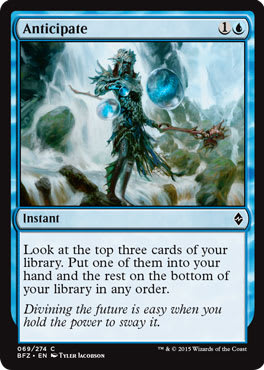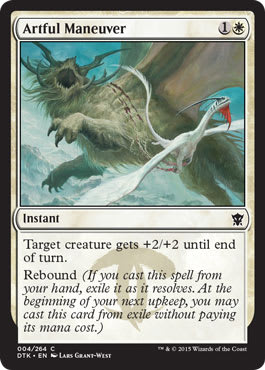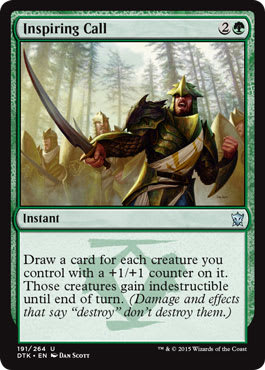The current way to make official play mats needs to change. I outline two ways to do so with quick, free solutions.
Before we get into what’s going on with play mats, we need to define things for those not in the know of the current state of affairs. Play mats, or gaming play mats, are generally the same rough rectangular shape and have three types used by Magic players:
- Ultra Pro, a company that has the official license with Wizards, creates the copyrighted images for usages in major events.
- Myriad other companies create third-party play mats for local gaming stores, for regional tournaments, and for tournament series versions. Play mat imagery often has a gray area, with depictions of a plane being occasionally permitted, where cease-and-desist letters come swiftly when a company makes something that’s too Zendikar-looking or too obviously on Ravnica to be permitted.
- Players create their own play mats via InkedPlaymats.com and other create-your-own-play-mat websites. This option has been exploding in popularity in the past year to eighteen months.
Play mats often have a very personal appeal, with players having a memorable first mat and then their more personalized current play mats. This matters because large tournaments feel compelled, with player expectations set quite high, to create a memorable play mat for thousands of people while maintaining a level of quality, brand resonance, and a cost-efficient solution. This means that an exciting, valuable mat, the larger the tournament, should scale upward in value and wow.
A troubling reveal happened recently, and it raises a larger question on a commemorative play mat we Magic players receive at larger tournaments. Grand Prix Las Vegas’s format this year is Modern Masters (2015 Edition), and its play mat was announced to an incredibly negative reaction:
The #GPVegas playmat was revealed today: check it out! Prereg now & secure your spot (and mat) http://t.co/IOVoOouWBa pic.twitter.com/CtkOEh5gAR
— ChannelFireball (@ChannelFireball) April 8, 2015

The play mat is of Etched Champion by Matt Cavotta, a really standout artwork. It appears the art is a new depiction, yet to be announced by which artist. The image is new, a promotional version of the original, painted over with a golden metallic color and stripped of the background of Mirrodin’s suns.


As it stands, it’s a metal creature that is being confused for another card, Etched Oracle, both of which aren’t extensively played in the Modern format.
I was talking to a friend of mine, Eric Moran, who offered this up:
This is an issue.
Keeping a Spice Rack for the Bland
To be bland is a fate worse than having hated art. This isn’t the first time a play mat hasn’t quite hit its mark. Occasionally, new artworks slip by approvals, but it’s rare and quickly rectified. The issue that we’re discussing is that play mats are a cost sunk by players. A total “value” of an entry includes an intangible mount for a player to receive a play mat, and player excitement builds into the play mat’s reveal. The higher the interest in the play mat, the higher amount players can trade or sell the play mat to vendors on site.
Bad play mats have no value to players. They then have a feel-bad of “paying” for a sunk cost because either the trade value will be near zero or, worse, vendors won’t want them at all on site and, at worst, no one back home will want it either.
This lack of excitement for a largely unplayed card ties directly into a financial ability of a player to recoup cost. This unexciting play mat isn’t popular and probably won’t be popular. By Grand Prix Las Vegas having a second play mat, yet to be revealed, this exemplifies the need that this simply isn’t good enough. While this art isn’t atrocious and the card itself is not unplayable, it’s leaving much to be desired.
The Good, Better, and Best
Bridging the gap between an exciting, cool play mat and making it a popular play mat—desired by vendors and other players—is no easy task. If it were, tournament organizers wouldn’t commission new artworks for events. To dive into this, we need to get a blip into retail psychology.
I live in Minneapolis, and it’s one of the corporate cities chock-full of retail headquarters. My graduate-school case studies generally revolved around how to optimally market to consumers and, in doing so, a few things stick with you. The minor things like good, better, best and “situation, behavior, result” are just ingrained into your thinking. Also, my wife is a retail consultant, making a few concepts stick with me.
Most highly consumable brands are organized into tiers you see on a daily basis to give us choices and showing that we consumers will move upward or downward according. Three examples would be Gatorade, Powerade, and Vitamin Water. If one is on sale or more easily attainable for only a slightly higher cost, we upgrade our selection to internally feel better about moving on up.
To compare to other event experiences, a selfie taking in a convention center isn’t seen by players every day, but if they choose to frame a play mat or use a play mat every time they play, a lingering experience and branded remembrance of the event will keep a player connected. It increases the shelf life of the event, creating opportunity to increase that player’s percentage chance of visiting another large or similarly managed event. Likewise, players who also see said play mat may want to join their friends at the upgraded, larger event. Play mats are an advertising campaign. How long the advertising campaign runs is up to Wizards and tournament organizers to decide through seemingly minor, micro-decisions.
With that, let’s dive into some options to prevent a mishap like this from happening again.
1 — A Good (Enough) Option
This is our more or less current version with Wizards on how play mats are made for large tournaments, stripped of most of the nuance:
- Wizards offers up one to three Magic-card-artwork options to tournament organizers. Who decides which short list is created is unknown to me, but I’m sure Organized Play receives the art asset from the CAPS or creative team and approval from the brand team.
- Tournament organizers choose an artwork. This I know to be true—if they have options, of course.
- Graphic design is handled by the tournament organizer, with approvals needing to be granted by someone at Wizards.
- Play mats are bought in bulk, and a set number are given away to entries to a large-scale event as part of the registration cost. Often, without preregistering, play mats run out of stock at an event.
This system works the vast majority of times.
Once the play mats actually hit the hands of players, some play mats become valuable after events by hitting the secondary market. On site, in-demand play mats can be often traded to dealers for an instant $10 to $20, which could translate into a free side event if the math is coordinated with the option in mind. One can never predict exactly how this price could interact, but a tournament organizer could recoup funds pretty quickly for added profitability. Add a better artwork that’s valuable, and a tournament organizer can basically get more mileage out of players. It’s called dwell time, and the amount TOs can increase the time we are there, the more profitable they can become.
Logos of tournament organizers are present with the event, signifying validity of the play mat, and in the best cases, they aren’t considerably intrusive into the focal points of the artwork in the middle of the play mat.
Planeswalkers are the easy choice for play mats, as most are very playable, and even if they are a Tibalt, the Fiend-Blooded or Chandra Ablaze, there are generally a secondary one to choose from.

2 — A Better Option
Instead of someone selecting a short list of artworks for a tournament organizer or Wizards itself to choose, perhaps even on a whim, more organization with minimal effort could be done to improve play mat selection. To summarize, a better ideal is having the format lead play mats:
- Format leads play mats. Post-banning updates to Modern especially should have rapid changes in metagame-leading cards and, in turn, play mats that should be created in response. Is there a new green silver bullet for a blue deck? Make a play mat out of it.
- Slowly, but methodically driven by choices offered by Wizards, every deck in the Modern format is covered with a marquee card art on an official play mat. This could be a list on a single piece of paper with checkmarks.
- There should be a focus on “freshness” in play mat creation as a strategic goal.
As rapid as decks change in the Modern and Standard format is, play mats should as well. Post-bannings, Magic Online lists and top decks could and should be immediately made into play mats. As the game ages and competition for a player’s desire to use a tournament’s play mat may wane, the flavor-of-the-week play mat will be easier to trump on an ongoing basis.
Making play mats to be “better cards” is difficult, but making them key card arts in a new or emerging deck is a nod to players, grinders, and the community, recognizing that a particular deck can be invested in because it won’t be banned away since a play mat was commissioned. Now, that is a dangerous assumption to make, but players will inevitably see the connection.
The art below, Sword of Fire and Ice, ties directly to a specific Grand Prix event as the new Chris Rahn alternate artwork of this card was opened by players at that Grand Prix. While it is not a card played in sets of four across every format, it’s a very powerful card, so while not extensively played in the Modern format, it is an often-included staple in Cubes and Commander decks. It was exciting and new, it looked great, and the freshness made people want it.

3 — A Best Option
To reach a best option, deeper, strategic thinking is involved to immerse players in their decks via play mats and the overall metagame. If a better option is to focus on decks and cards being played in decks, a best option brings it to a higher level of quality, to utterly wow players with the most beautiful, iconic art:
- A list that would be “iconic card arts upon exceptional cards” could be made. These are the most flavorful and beautiful card artworks on heavily played cards.
- A large list, not unlike judge-foil speculation lists of “tournament staples yet to be made onto play mats” could be created.
- A pool of “exceptional artworks” would be created, with a slow process to have them made would be implemented.
Iconic Art on Exceptional Cards
An aging player base has play mats already. They have been playing on and off for over twenty years. A play mat must serve two purposes for them: satisfy players wishing to make use of a product, as they’ve reentered playing the game and need to replace their older play mats, which is covered in food residue and dirt that they’ve cherished for years.
This is where a reprinted play mat could be made for players after a set number of years. Then, it makes it a service to established players, reinviting them to an event with them in mind. I think of Modern Masters, yes, but the concept also applies when Wizards revisits a plane like Ravnica or, eventually, Dominaria.

Swords to Plowshares by Terese Nielsen
This is a perfect example of a strong card with incredible art by a fantastic artist. This was made into a play mat and hit a homerun in doing so.
Tournament Staples
A working group, under NDA, that could be called upon to weigh in on choices being made would really help tournament organizers and Wizards Organized Play to determine what cards that people play but rarely are play mats made for those decks. I think of Vintage and Legacy decks like Workshop, Dredge, Merfolk, and all depictions of tutors.
I suppose someone internally at Wizards could be assigned to make a tournament-staple list, though inviting community members to help would be a zero-cost advertising effort, as they could, and probably would, write about hyping the new product and event.

Goblin Charbelcher by Stephen Tappin
It would make for a killer Legacy GP play mat.
Exceptional Artworks
I believe a list of card artworks that have been accepted into art annuals, given awards, and established as “great art” could be a large well that Wizards and tournament organizers could check in on. Magic creates the highest number of original, new artworks in the industry, and many of them are award-winning depictions.

Cartographer by Donato Giancola

Lair of the Ashen Idol by Philip Straub
Magic has numerous entries into the Spectrum art annual book each year, and very few of those artworks have found their ways onto play mats. An archive of Spectrum can be found here and here, with Chesley awards here. From award-winning arts to mere combat tricks with outrageously great art, some analysis could be done to optimize choices for primary and secondary play-mat options, depending on event size
As examples, both of the below artworks were in Spectrum’s art annual, and both are incredibly powerful cards used in decks across many formats. Additionally, if a card is expected to have a high percentage of copies in a Top 8, the play mat serves as a summary after the event on what happened in a single snapshot. These are a high standard to which the largest of Grand Prix events should aspire to reach.


Concluding
It’s an arms race of preferential play mats, and while great art on fantastic cards can be made a sustainable process, using new art with strong visual identity to a location is ultimately the smartest financial move. Creating constant value is hard to sustain, but great-looking art with a system to have the highest-percentage chance of a great card with great art is rather simple. It’s a case of Shifting Loyalties at its best to reinvigorate a player’s connection to larger events.
This Grand Prix Las Vegas uproar is a minor blip on the overall health of Magic using art to commemorate events. The card isn’t strong enough to be on a set with Eldrazi, mythic rares, and high-value foil cards.
Bringing the art to exciting and amazing, normally in the trading-card industry, involves artworks being flagged to have different dimensions or be created larger specifically for marketing usages like banners, play mats, and the like. This is done by the organized-play team reminding playtesters (Development) that they need a set number of great cards to feature on marketing materials like play mats. A list is generated with “cards that will probably be popular” and given to the creative team of art directors, who commission artworks that have dimensions that will fit on cards but also on any marketing material. Adding bleed and extensions after the fact is very stressful and bothersome to artists if they don’t know why they’re being asked to do so. That creates set-aside assets to be used. I’m not entirely sure outside of Planeswalkers and alternate/promotional artworks that this is conducted on the front end of the commissioning cycle. I just don’t know.
I hope new approaches are being considered as sets will ramp up in frequency with the elimination of the core set. I proposed two things; I hope many more are being considered because blandness can be easily avoided.
A constantly new play mat, connected to new sets, with the best art, will be needed. How Wizards and tournament organizers integrate the best art on the best cards is the lasting question I look forward to seeing and answer to—there are simply too many options in 2015 to not be more systematic about this, thus garnering negative PR with a low-EV play mat because people aren’t excited about a poor choice.
-Mike


























